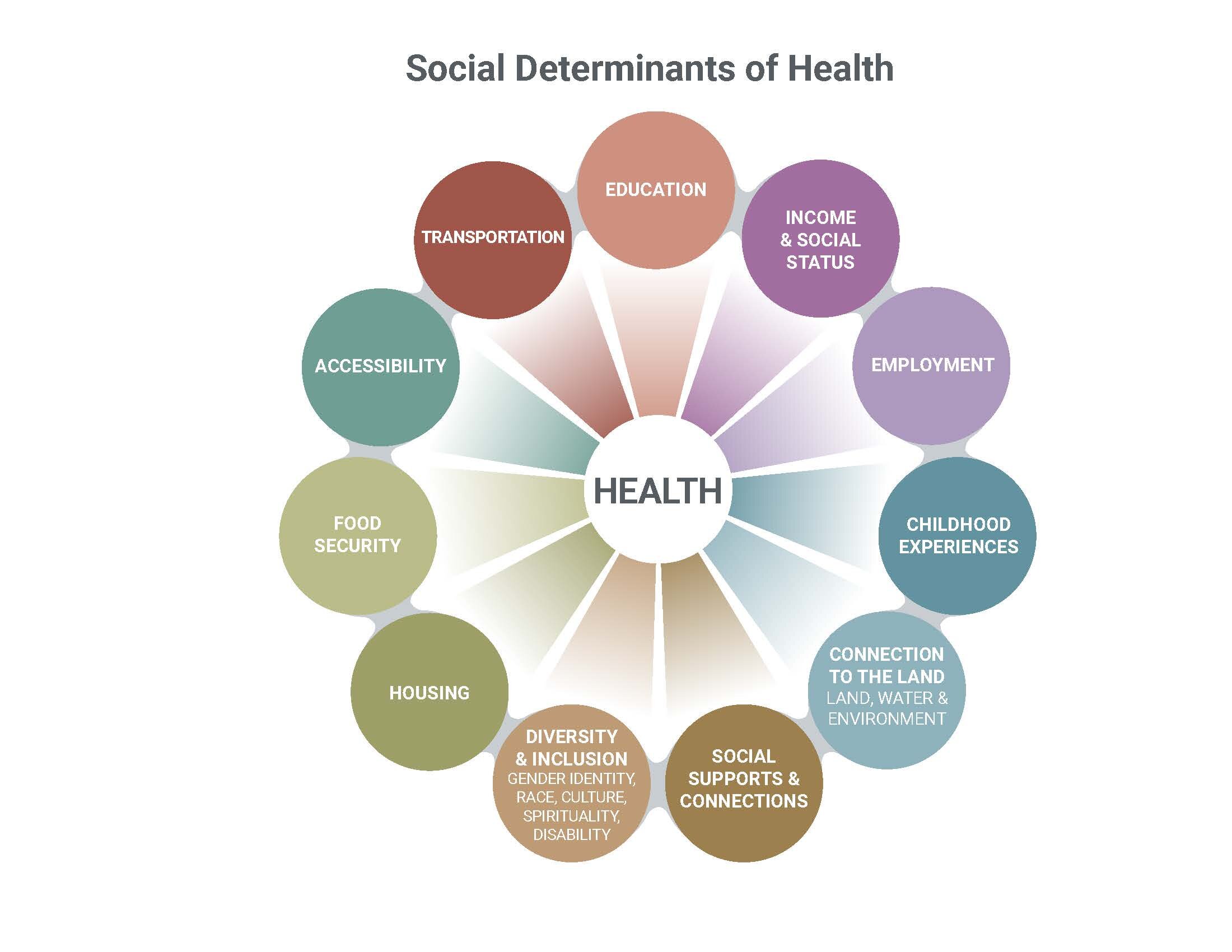Determinants of health.
What Determines our Health?
Individual and community health is influenced by the conditions in which we grow, live, work and age. These conditions, or determinants of health, include a broad range of personal, social, economic and environmental factors that contribute to individual, family and community wellness. Improving these conditions often addresses the root cause of many health problems. Our Community Health Network brings people together to focus on addressing determinants of health and health inequalities.
Education
Access to quality education for children and lifelong learning for adults are key contributors to health for individuals and for the community. Education contributes to health by equipping people with knowledge and skills for problem solving and can provide a sense of control over life circumstances. Education increases opportunities for employment and income security, and job satisfaction.
Income & Social Status
Health status improves as income and social status increase. Living conditions such as safe housing and the ability to buy enough good food are critical to good health. The healthiest societies are those with populations that are prosperous and have an equitable distribution of wealth.
Employment
Stable employment and safe, low stress working conditions are associated with better health. People who have more control over their work circumstances and fewer stress-related demands of the job are healthier and often live longer than those in more stressful or riskier work and activities.
Childhood Experiences
Child development is a powerful determinant of health as quality early childhood experiences impact lifelong health and well-being.
Connection to the Land (land, water & Environment)
Land includes the ocean, air, food and all of nature. Being connected to the land improves our health. We have a responsibility to take care of the land because land and health are closely intertwined– our land is the ultimate nurturer of people.
Social Supports & Connections
Support from families, friends and community is associated with better health. Strong support networks, both within families and within the community, can increase coping in difficult times. The caring and respect that occurs in social relationships, and the resulting sense of satisfaction and well-being, support physical and mental health.
Diversity and Inclusion (Gender Identity, Race, Culture, Spirituality, Disability)
Some persons or groups face additional health challenges due to factors that are outside of their control such as their identity, race, language, ability or culture. Eliminating marginalization and stigmatization will contribute to improved health outcomes.
Housing
Appropriate housing is a necessity for living a healthy life. Living in safe, affordable and secure housing reduces the risk of many health problems.
Food Security
When people are food secure and eat a healthy, diverse diet they live with greater dignity and higher physical and mental health.
Accessibility
Accessibility means that everyone can use all the spaces and places in our community. It also means that they can get the information they need. To ensure health and equity for all a community needs to provide the supports and opportunities necessary for people with diverse abilities to participate in their community.
Transportation
The design of transportation systems significantly impacts physical and psychological well-being by influencing accessibility to services and engagement in communities. Easily walkable, bike-able, transit-oriented communities are associated with healthier populations.
To explore how Indigenous people approach health, wellness and determinants of health here are some useful resources:
First Nations Health Council: What are Social Determinants of Health?
First Nations Health Authority: First Nations Perspective on Health and Wellness
Source documents: Federal Accessibility Legislation Alliance, Health Canada, National Collaborating Centre for the Determinants of Health, The Canadian Facts.












